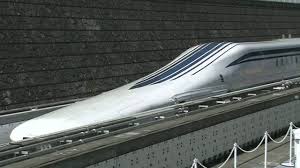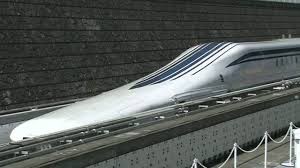“Oh look. It’s a bird-
It’s a plane-
It’s an insanely fast Japanese bullet train.”
On 21st April, Japan broke the world record in high speed rail travel, when its seven car maglev train, short for magnetic levitation, travelled at a speed of 603 km/hr on a test run track near Mount Fuji. The train managed to travel 1.8 km in 10.8 seconds; crossing the 600 km/hr mark. The train broke its own record in less than a week, last recording a speed of 590 km/hr. Their last record was a bullet train with a speed of 581 km/hr in 2003.
The train works on the principle of magnetic levitation, using magnetic propulsion to thrust itself forward. Technical analysts say that the faster the train runs, the more stable it comes, and hence the more confortable its journey would be. The train does not use rail tracks; instead it hovers 10 cm above ground and is propelled by electrically charged magnets, allowing frictionless and potentially fast travel. The train will travel 40 metres underground, which will solve the problem of noise that trains traveling above 500 km/hr generally tend to cause.
JR Central wants to have a maglev train in service by 2027 on a route between Tokyo and Nagoya- a distance of 286 km which is expected to take 40 mins, normally taking 5 hours by car. By 2045, maglev trains are expected to link Tokyo and Osaka in just one hour and seven minutes, cutting the journey time by half.
However, critics say that the technology is too expensive. The construction costs are astronomical. The setup till Nagoya itself will cost $100 million; with more than 80% cost added due to digging tunnels. Also, such fast technology can prove to be unsafe; specially in case of earthquakes which could knock off its line and can have disastrous effects at such fast speed. However, technical experts are counting on early warning system and regular test runs to mitigate such disasters.
Japan is looking forward to sell this technology overseas, with Japanese PM Shinzo Abe hoping to recover its research and development costs by this export. Japan is expecting to promote this technology in setting up a track between New York and Washington, thus promoting high speed rail travel. With this breakthrough, Japan has become one of the front-runners in next generation high speed transport; which will help in reviving its economy through infrastructural exports.





3 Comments. Leave new
very well written Nirali 🙂
Well explained 🙂
Very well structured article 😀
Have gone through many blog with same subject , but this was the best one 😀
Good work 😀